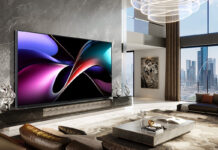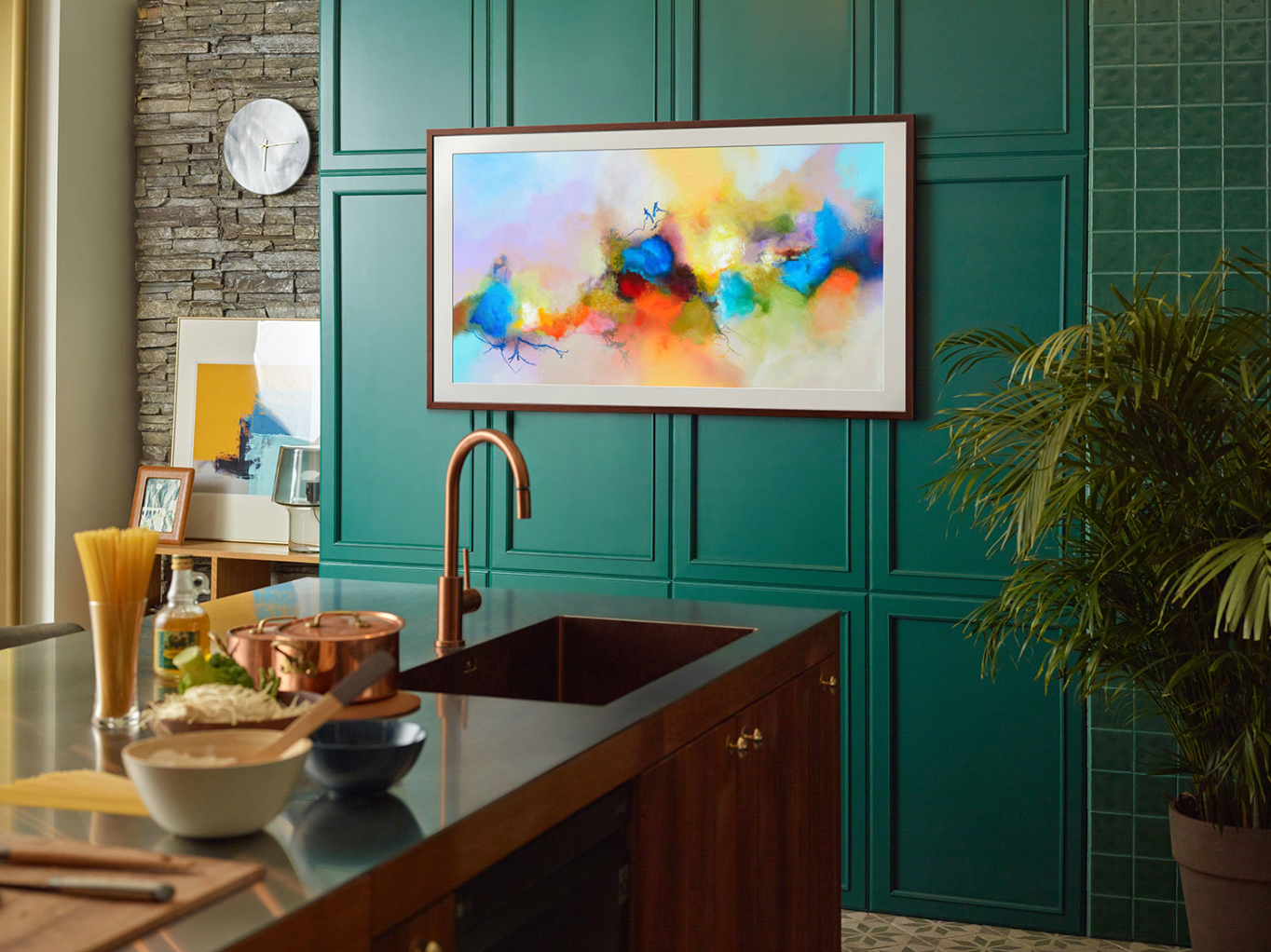
QLED TVs are one of the top TVs you’ll find on the market today. If you’re trying to decide between LED, OLED, and QLED, it helps to know the specific differences and what makes a QLED TV stand apart from other types. Here’s everything you need to know about this TV technology so you can choose the best TV for you.
What is QLED TV?
You probably know that an LED TV is a TV with an LED backlight. LED TVs are made up of three parts: a white backlight, tiny colour filters that turn the white light into red, blue, and green, and an LCD layer (liquid crystal display) that produce the picture you see on the TV. The liquid crystals work by flickering or blinking off and on depending on what colour is needed.
The problem is that LEDs aren’t known for producing the pure, white light needed to showcase the best contrast between light and dark. Most LED lights used in LED TVs will emit a yellow-tinted light. This means that colours may seem a bit off, and the LED TV design may result in bleed-through of light so blacks look greyish and whites aren’t as bright as they could be.
That’s where QLED comes in. QLED isn’t a type of backlight—it’s more of a colour and contrast booster for LED TVs. In a QLED TV, a layer of nanoparticles called quantum dots is placed between the backlight of the TV and the LCD. QLED TVs still use an LED backlight, but the LEDs used to produce the backlight are blue instead of yellow. When the LED light shines on the layer of quantum dots, the dots light up and the colours blend to produce a picture with more accurate colours. The result is a picture quality with natural, realistic colour representation, better contrast, and a brighter picture overall.
Neo QLED vs QLED
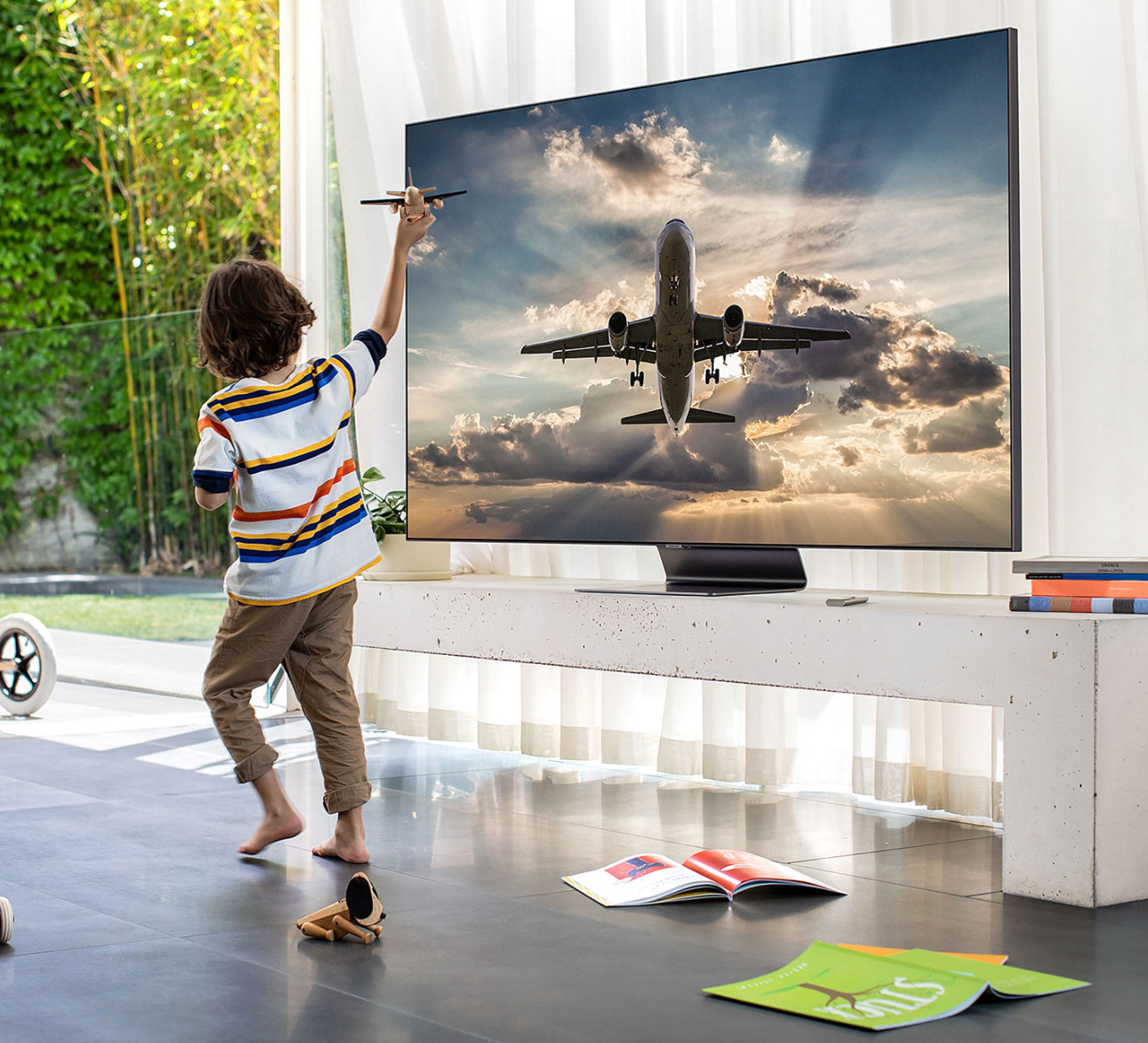
QLED is a layer of quantum dots placed over an LED backlight, but there’s also a type of TV called Neo QLED. Neo QLED is just like a QLED TV, but in a Neo QLED TV the backlight is Mini-LED instead of standard LED.
Mini-LEDs are still LEDs, but they’re much smaller than an LED. For a comparison, you can get an idea of the size difference by thinking of an LED as if it was the size of a car’s headlight and a Mini-LED as the size of a bulb on a set of LED string lights you’d use on your Christmas tree.
Neo QLED is the future of QLED
The smaller lights that make up a Mini-LED backlight make a real difference in terms of picture quality. An LED TV uses hundreds of LEDs, while a Mini-LED TV uses thousands. Because it has more lights a Neo-QLED TV has more dimming zones, and that means better control over colour and contrast. Blacks will be deeper and darker than LED, whites will be brighter and whiter, and colours will be rich and vibrant.
QLED vs OLED vs Mini LED 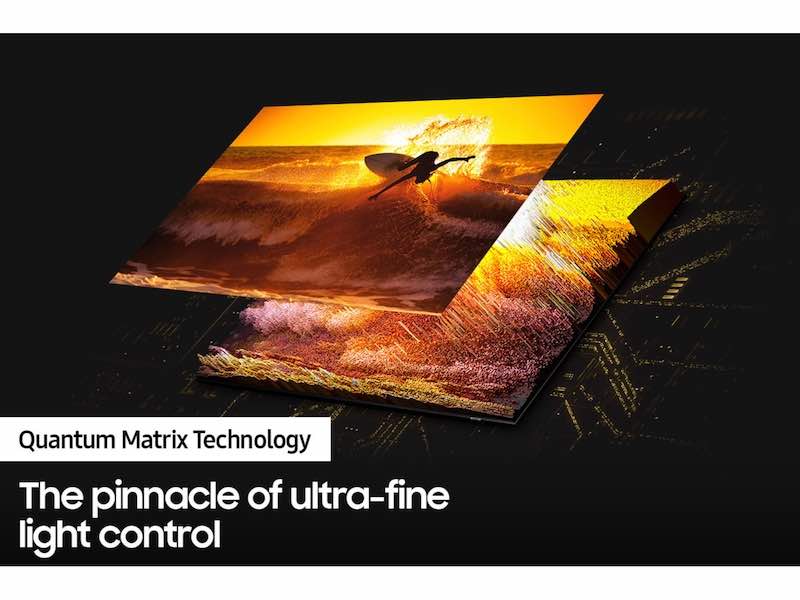
Now that you know what QLED and Neo-QLED is, let’s compare this type of TV to a few other types.
LED vs LCD TVs
The term LED and LCD is often used to refer to an LED TV, but they are slightly different. The original LCD or liquid crystal display used cold-cathode fluorescent lamps as the backlight for the TV. These TVs were boxy, heavy, and only available in very small sizes.
When LED was introduced, the type of backlight used in LCD TVs switched to the much smaller and energy-efficient light emitting diodes. The TVs still had an LCD panel. That means an LED TV is still considered an LCD TV, but TVs with LEDs are thinner, weigh less, and had better contrast and brightness than LCD TVs.
OLED vs QLED TVs
QLED TVs use backlight technology, but OLED TVs do not. Instead of a backlight with a layer of quantum dots, an OLED TV doesn’t use a backlight and each pixel in the TV is self-illuminating so they can turn off and on independently.
Although a Neo QLED TV can control potential bleed-through so colours are bright, white, or very black, OLED has complete control over colour and contrast. Because each pixel can turn off and on independently, OLED TVs are the only type of TV that can produce true black. However, while OLED can produce true black, the backlight used in a QLED TV means that the QLED can be a lot brighter than an OLED.
Some of the newest TVs have added a quantum dot layer to an OLED TV, essentially super-charging an already bright panel and boosting colour definition, contrast, and brightness. This type of TV is called QD-OLED or quantum dot OLED. You can read more about OLED and QD-OLED in this article about OLED TV.
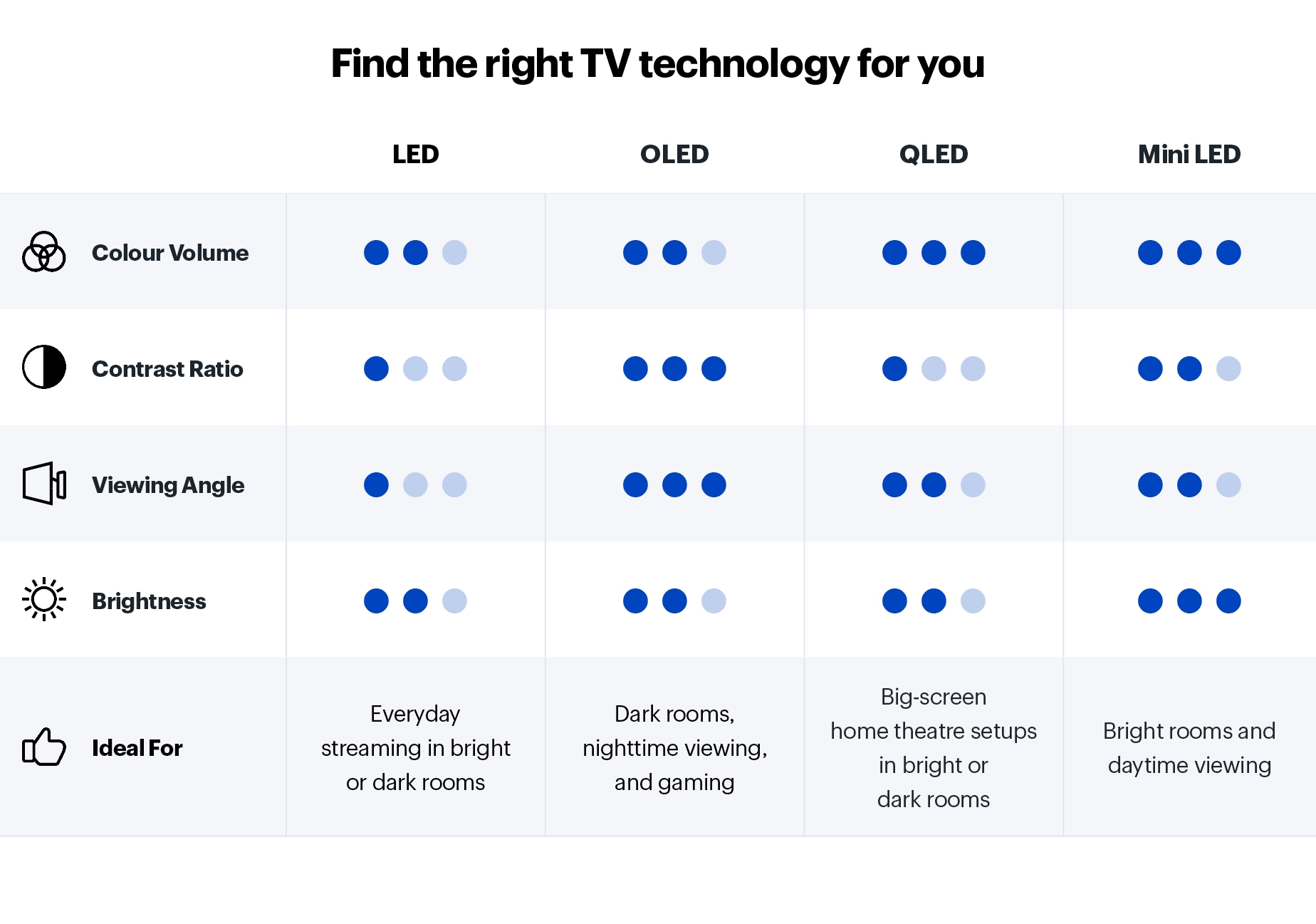
Benefits of QLED TVs
QLED TVs are an excellent choice for living rooms, home theatres, basements, and bedrooms. They are available in a wide variety of sizes, are lightweight, very thin, and have technology on board that makes them excellent for gaming, movie viewing, or just watching TV. Depending on the model you choose, your QLED TV will have a few other unique benefits.
QLED is better for natural light settings

Because a QLED TV uses an LED or Mini-LED backlight, they have the unique ability to produce incredibly accurate colours and a brighter picture overall. They are at least 50 percent brighter than a standard 4K LED TV, and they can also be brighter than an OLED TV.
If your living room has a lot of windows and skylights, or you don’t have blinds or curtains, you’ll love having a QLED TV. It’s the best choice for rooms with a lot of ambient light because it has the highest peak brightness and can overcome glare and reflections from direct sunlight. QLED is also a great choice for anyone who watches a lot of sports. They have technology on board for smooth motion, and because they are so bright everything looks so vivid and real-to-life that it will feel like you’re on the field with the team.
Depending on the model you choose, your QLED TV may also have an ambient light feature that senses the light levels in the room and auto-adjusts the brightness to overcome the effects of direct light. You won’t have to interrupt viewing to adjust brightness when you’re watching a movie or sports in a very bright room. Your TV will simply increase the brightness when you need it and decrease it when you don’t.
QLED TVs have a better contrast ratio and broader colour scheme
A QLED TV has a better contrast ratio compared to an LED TV. The layer of quantum dots let the LED backlight produce a more pure white light, and that results in the production of better bright whites and deep, rich blacks on your TV. While QLED technology can’t achieve true black, a Neo QLED definitely comes close. Because of the layer of quantum dots, QLED TVs can also achieve a wider palette of colours. With a colour scheme that includes millions of hues and shades, everything you watch will be more realistic and natural.
Resolution and QLED TVs
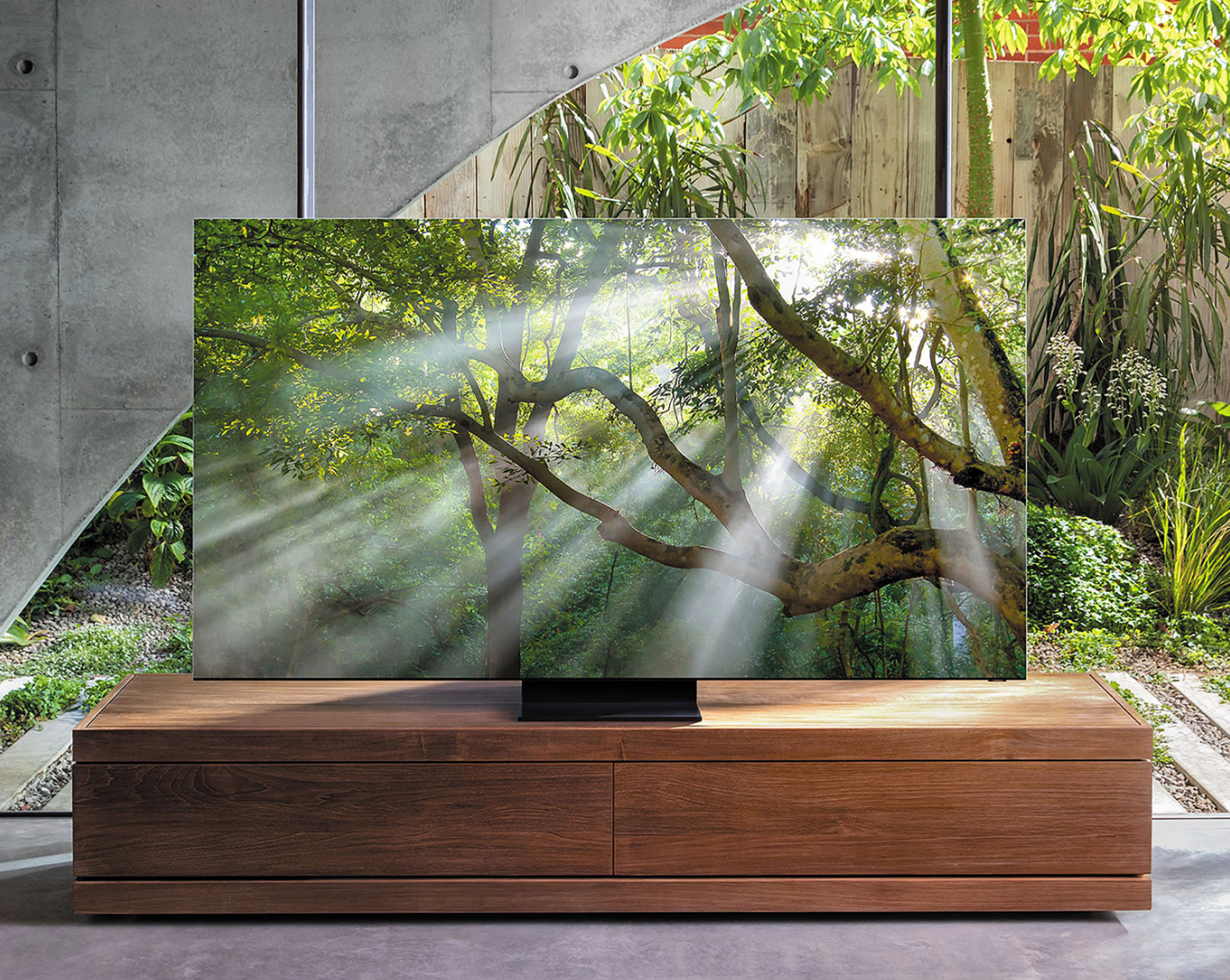
Resolution refers to how many pixels your TV uses to produce your picture. The more pixels your TV has, the better your picture quality will be. QLED TVs are available in 4K UHD (ultra HD) resolution or 8K UHD resolution. 4K has almost 4,000 pixels (3840 x 2160) and 8K has almost 8,000 pixels (7,680 x 4,320).
Because QLED TVs can achieve 4K and 8K resolution, they are able to be produced in larger sizes. You’ll find that 55-inch and 65-inch QLED TVs are standard for both 4K and 8K resolution. Neo-QLED TVs can even be as big as 98-inches.
If you’re shopping based on resolution and you’re looking at a 4K TV, you might be wondering how a 4K QLED TV measures up to a 4K OLED. You’ll find there are good points for both types. A 4K QLED TV will be brighter, is available in larger sizes, and is great for bright rooms. On the other hand, a 4K OLED TV can display true black, has better contrast, and is the perfect choice for a room without a lot of outside light. Both are a great choice for 4K gaming on the latest consoles.
Which brands make QLED and QD-OLED TVs?
QLED TVs are available from your favourite TV brands including Samsung, LG, TCL, and Sony. If you’d like to upgrade and you’re looking for an OLED with quantum dots, you’ll also find new QD-OLED TVs from Samsung and Sony.
Ready to take the next step? Head to BestBuy.ca, where you can shop a wide selection of QLED TVs.

